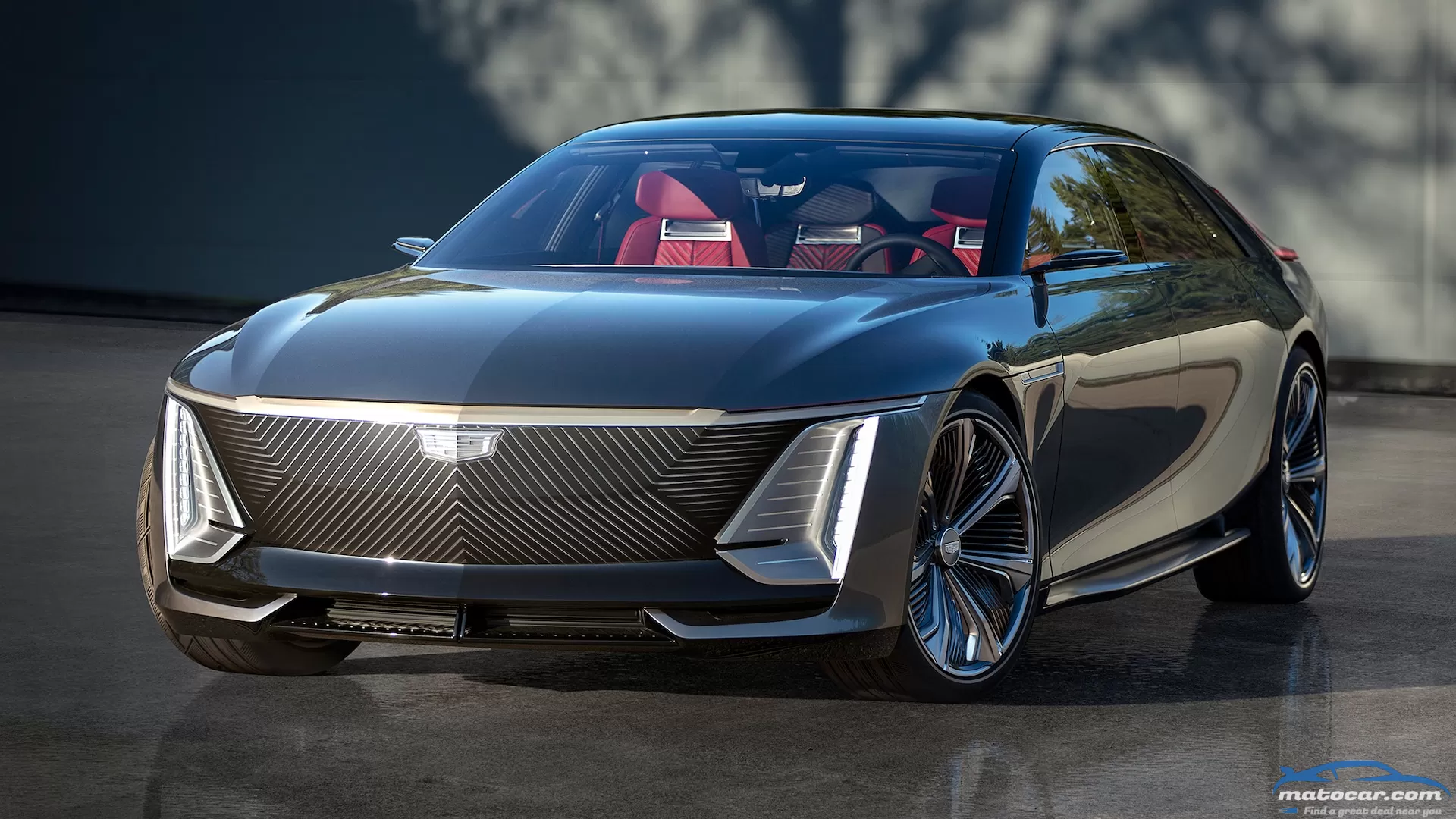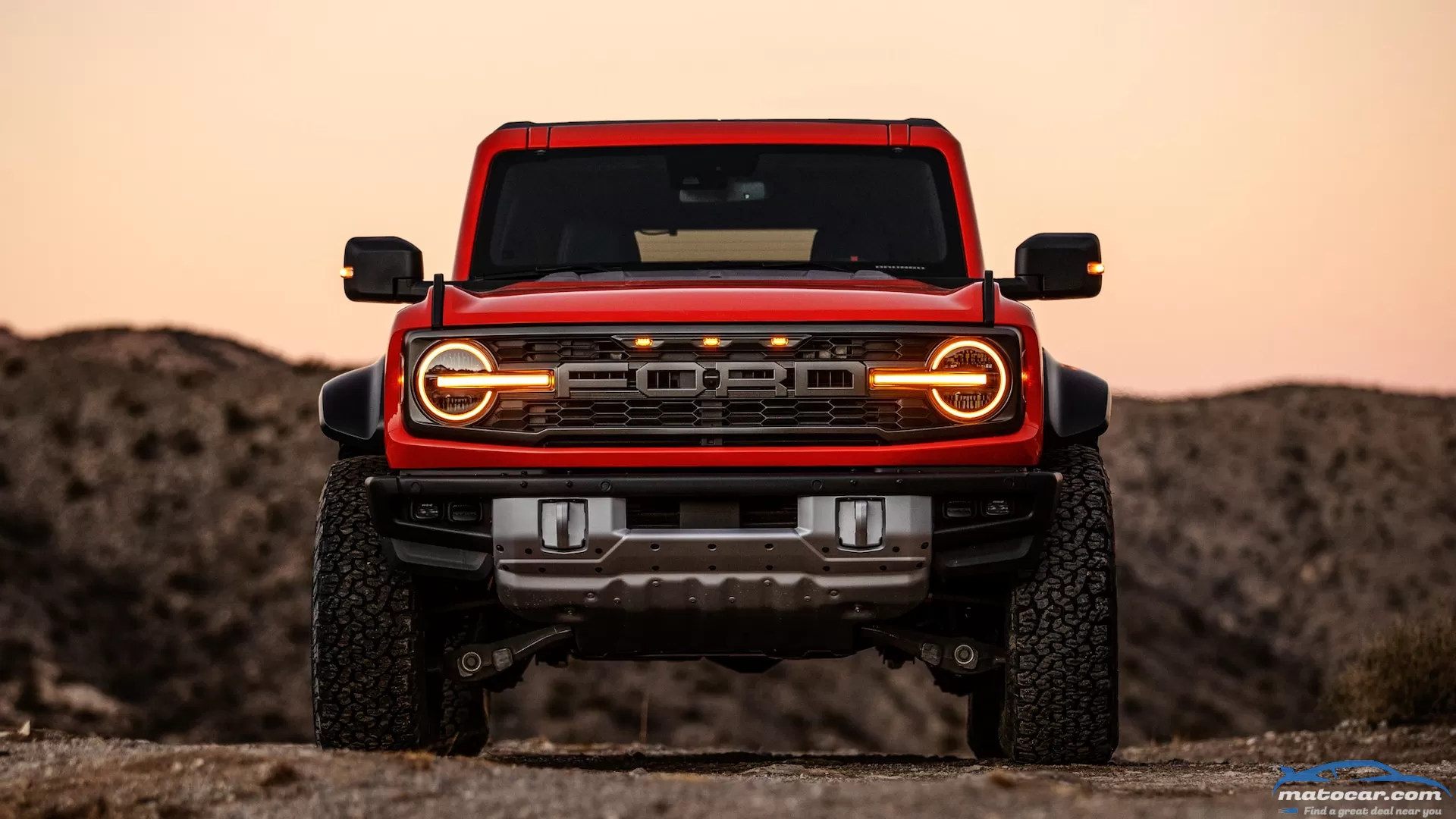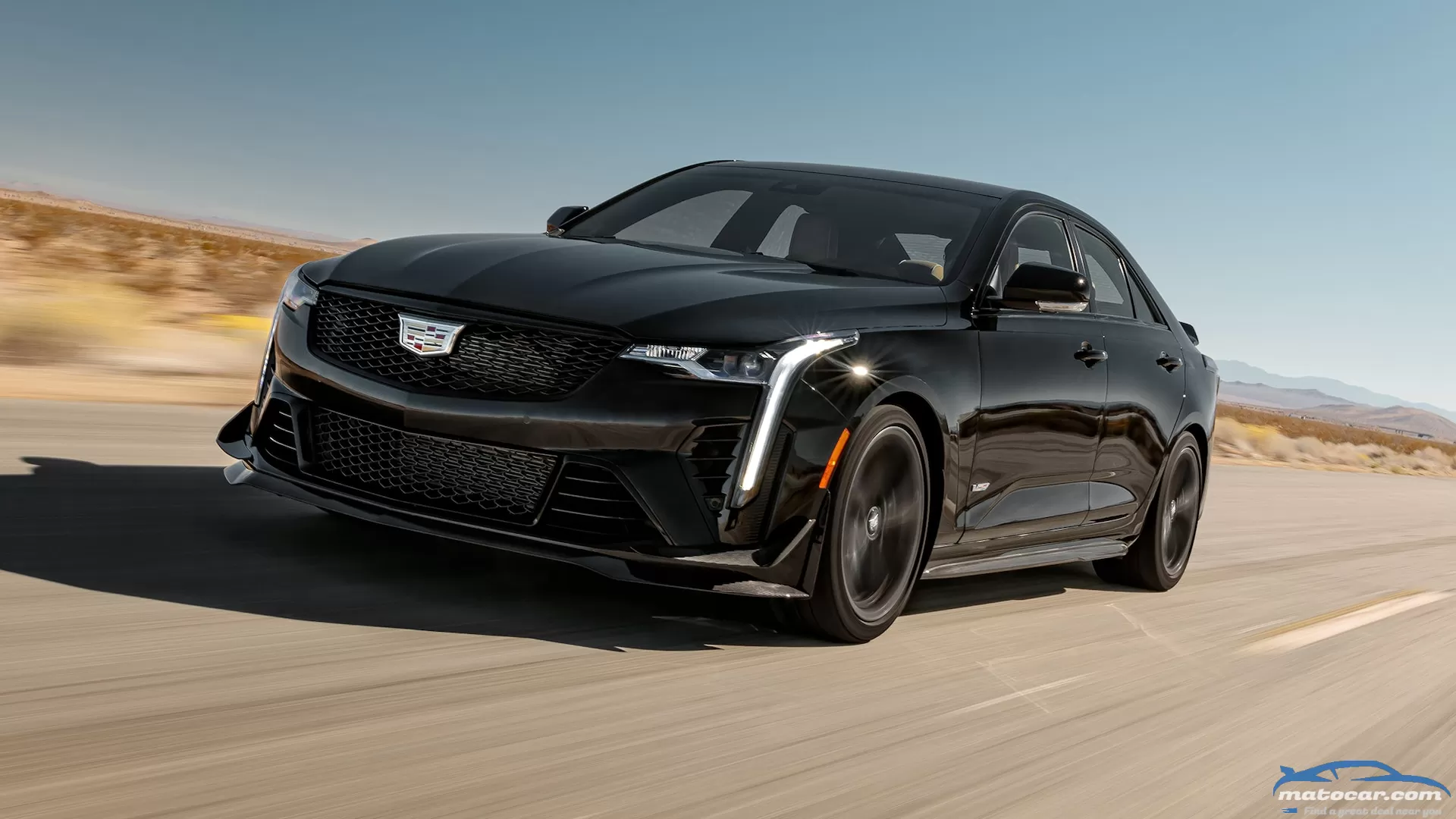2024 Cadillac Celestiq First Look: A $300,000 Handmade Tale

Cadillac's New Face
Hand Assembly
Aluminum Spaceframe With Applied Panels
Four First-Class Eames Chairs
Theatrical Red With Ombre Shading
Coffee-Tanned Leather, Pillar-to-Pillar Screen
.
Return of the Goddess
How Much of This Will Make Production?
When, How, and How Much?
2024 Cadillac Celestiq Specifications BASE PRICE $300,000 (est) LAYOUT Front- and rear-motor, AWD, 4-pass, 4-door hatchback MOTORS 2 x 315-hp/400-lb-ft (est) AC, permanent-magnet electric TRANSMISSIONS 1-speed auto CURB WEIGHT 6,000 lb (est) WHEELBASE 120.0 in (est) L x W x H 210.5 x 79.7 x 57.5 in (est) 0-60 MPH 4.5 sec (MT est) EPA FUEL ECON Not yet rated EPA RANGE, COMB 300 miles (est) ON SALE Early 2024 Show AllYou may also like
Whether we're talking features per dollar, calories burned per hour, or hours played per video game, enthusiasts of all kinds search for solutions that extract the most out of what we put in. That applies to EVs, too.Range is not the end-all be-all when it comes to EV bragging rights. Even an eight-ton abomination with the aerodynamics of a townhouse could reach 500 miles of range if it was fitted with an impractically heavy and expensive high-capacity battery. Instead, we want to praise the EVs that travel the farthest per gallon of gasoline equivalent (33.7 kWh).
Ever since spy shots of the flare-fendered, camouflaged 2022 Ford Bronco Raptor started hitting the airwaves, the internet has been buzzing as to whether it would be powered by an EcoBoost V-6 (and if so, which one?) or a Coyote V-8. Folks were clearly crossing their fingers for the latter, to relive those Bill Stroppe Baja fantasies. Now that the Bronco Raptor has dropped, we know we're getting the 3.0-liter twin-turbo EcoBoost six, and hearing the reasons why, we don't begrudge the decision. So read on for the answer to "Why no Bronco V-8?" and to learn how you will be able to buy a Bronco V-8 from Ford—sort of.Just Not a Good FitAs we've noted extensively, the Bronco is based on next-generation Ranger architecture, which involves a noticeably narrower frame than the one used by the F-150. Further tightening the engine compartment are shock towers that are elevated to provide the added suspension travel crucial to the Bronco Raptor's desert-blitzing capabilities. These taller towers prevent turbos and cylinder heads from being able to hang over the main frame rails. Such package constraints conspire against fitting a V-8 or even the wider 3.5-liter EcoBoost V-6 in a Bronco Raptor engine bay.So when some aftermarket tuner comes along with an Bronco V-8 transplant, inevitably wearing Poppy Red, white, and blue livery, you'll likely learn that that specific Bronco didn't start life as a Raptor (and you may rightly fret about its cooling performance and durability).Nose Heavy?Extra weight on the nose of a desert racer is never a good thing. It overworks the springs and dampers, causes the front end to plow, adds wear to the front tires, and more. And although the overall weight of the Coyote V-8 isn't that much different from that of the EcoBoost V-6 engines (turbos weigh more than pistons!), the V-8 is longer, moving the engine's center of mass forward. This would have the effect of adding weight to the nose of a Bronco V-8.Out of CharacterThis most extreme example of the "Born Wild" Bronco cries out for the broad, flat torque curve that comes with a twin-turbo engine. Naturally aspirated V-8s can't typically match this torque-everywhere character that a twin-turbo EcoBoost engine provides. And in any case, if our estimates of power and weight are correct, the Bronco Raptor should roughly hit the weight-to-power and hence 0-60-mph acceleration of the similarly tired Ford F-150 Raptor 37.You CAN Have a Bronco V-8!Wait, what? That's right, Ford is building a Bronco with a V-8. You simply won't be able to drive it to your local cars and coffee, or on public roads in general, but maybe you could live out your Stroppe fantasies and win the SCORE Baja 1000 race in it. We're talking about the 2023 Ford Bronco DR, a not-street-legal off-road-racing Bronco available to privateer racers.Buy one of these, and you'd also be living out a "Rod Hall and Larry Minor" fantasy—they won the Baja 1000 overall in a stock Bronco V-8 in 1969. This tube-frame racing truck faces none of packaging dilemmas that plague the production truck, so it will run a V-8. It'll also package the radiator behind the driver. Oh, and it'll cost in the mid-$200,000s when it goes on sale this fall. How badly do you want a Bronco V-8?
cadillac ct4 Full OverviewWhen the Cadillac ATS-V first hit the streets in 2016, we immediately threw it into comparison tests with the heavyweights: the Alfa Romeo Giulia Quadrifoglio, BMW M3, and Mercedes-AMG C63. The ATS-V came close, but it never won any of those comparisons. The new 2022 Cadillac CT4-V Blackwing—the CT4 is essentially a heavily updated ATS—attempts to right the wrongs of the older car.The CT4-V Blackwing should be immediately familiar to ATS-V drivers, despite the new name, face-lift, and extra 4 inches in length. Under the skin, the CT4-V Blackwing (not to be confused with the CT4-V, which is more of an interim performance model than full-blown V) features a carryover 3.6-liter twin-turbo V-6. Although the engine is upcycled, thanks to intake and tuning changes, it makes eight more horsepower now; output now totals 472 hp and 445 lb-ft of torque. Transmission options include a Tremec-sourced six-speed manual or a new 10-speed auto like the one on our test car. The latter replaces the old eight-speed unit, and it's quicker-shifting.Unlike some of its German rivals, rear-wheel drive is the only drivetrain option for this Cadillac. Other performance-minded changes include the adoption of Delphi's fourth-generation MagneRide shocks, the latest iteration of GM's Performance Traction Management (PTM) system, and two optional carbon fiber packs, which combine for a claimed 214 percent reduction in lift. Prices for the CT4-V Blackwing begin at $59,800, and our near-loaded car stickered for $80,235.The Performance NumbersDespite its eight horsepower and two-gear advantage over (we also tested the ATS-V in coupe form), the new CT4-V Blackwing is pokier at the test track than the ATS-V it replaces. The Blackwing accelerates from 0 to 60 mph in 4.0 seconds and through the quarter mile in 12.4 seconds at 114.0 mph; its best 60-0 stop was 106 feet. An automatic-equipped 2016 ATS-V sedan, for comparison, ran from 0 to 60 in 3.7 and through the quarter in 12.1 at 116.2 mph. Despite the Blackwing's more modern hard and software, it's the same story around the figure eight; its best lap was 23.8 seconds at a 0.84 g average, while the ATS-V did it in 23.7 seconds at 0.88 g. We suspect the new car's 100-pound weight disadvantage is to blame for the disparity.Although the CT4-V Blackwing doesn't offer up objective performance advantages over the car it replaces, it is significantly quicker than the CT4-V. Powered by a 2.7-liter turbocharged I-4 good for 325 hp and 380 lb-ft of torque and mated to a 10-speed auto, the non-Blackwing accelerates to 60 mph in 5.5 seconds and through the quarter in 14.2 seconds at 95.2 mph, and it stops from 60 mph in 110 feet. The CT4-V's best figure-eight lap was 25.4 seconds at 0.73 g.The DrivingOn the road, the CT4-V Blackwing driver is phenomenal—light on its feet, buttoned down, and practically telepathic. Few cars on sale today can match the CT4-V Blackwing in terms of pure feel and connection with its driver on a good, twisty bit of pavement. The Cadillac's PTM system deserves special praise, as it allows for tail-out antics while maintaining its undetectable leash on the rear end (and keeping you on the road).We wish we were as in love with the CT4-V Blackwing's powertrain. It's not that there's anything outright wrong with the V-6/automatic combo; it's punchy and powerful, and the transmission does its damnedest to convince you it's Porsche's PDK in terms of quick and precognitioned shifts. It's just that it's … boring, and this lack of character is perhaps the biggest sin you can make in creating a performance car. If those complaints sound familiar, it's because they are. We said the same thing five years ago when we first drove the ATS-V, suggesting that Cadillac fit the Chevrolet Camaro's (its platform mate) naturally aspirated V-8 into its sport sedan. Cadillac still hasn't done so, and given its promise that the CT4-V Blackwing and CT5-V Blackwing are its last two gas-powered V cars, it likely never will.The Rest of the StoryInside, the CT4-V Blackwing's interior takes a noticeable step up from that of the ATS-V's. The older car had a bit of a "low-spec German rental car" vibe inside, but the new CT4 bursts with quality and craftsmanship, even if there's still room for improvement. We really liked the redesigned dash the most. It features Cadillac's latest CUE infotainment system and a fully digital dash. We also took a shine to the redesigned steering wheel, which now prominently features a PTM switch at the 5 o'clock position—an infinitely better solution than burying the feature in traction control menus as in past products. We were also fans of the thickly bolstered, leather-wrapped bucket seats and carbon-fiber trim, though we found the armrests to be hard and the car rather cramped in general.Although the 2021 Cadillac CT4-V Blackwing isn't quicker than the ATS-V or the V-8-powered small Cadillac sport sedan of our dreams, it nevertheless is one of the most enjoyable and fun luxury performance cars on the road. As for how it stands up to the latest and greatest competition? Well, we already staged round one.As far as I can find, we never wrote anything about the sedan despite testing it. The previous link went to the coupe, which we tested on the same day.It's in MT Numbers and also the first link in the opening grafBlanked on my end there. Meant I couldn't find a stand-alone first test.Looks good! More details?2022 Cadilac CT4 V Blackwing Specifications BASE PRICE $59,900 PRICE AS TESTED $80,235 VEHICLE LAYOUT Front-engine, RWD, 5-pass, 4-door sedan ENGINE 3.6L Twin-turbo direct-injected DOHC 24-valve 60-degree V-6 POWER (SAE NET) 472 hp @ 5,750 rpm TORQUE (SAE NET) 445 lb-ft @ 3,500 rpm TRANSMISSION 10-speed automatic CURB WEIGHT (F/R DIST) 3,888 lb (53/47%) WHEELBASE 109.3 in LENGTH x WIDTH x HEIGHT 187.6 x 71.4 x 56.0 in 0-60 MPH 4.0 sec QUARTER MILE 12.4 sec @ 114.0 mph BRAKING, 60-0 MPH 106 ft LATERAL ACCELERATION 1.05 g (avg) MT FIGURE EIGHT 23.8 sec @ 0.84 g (avg) EPA CITY/HWY/COMB FUEL ECON 16/24/19 mpg EPA RANGE (COMB) 331 miles ON SALE Now Show All




0 Comments